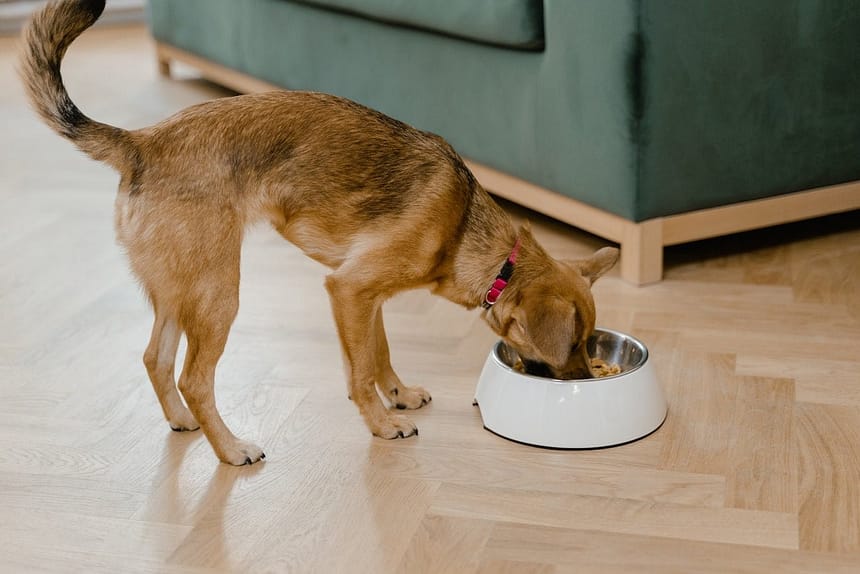Just like humans, dogs can sometimes be picky eaters, showing reluctance or disinterest in their food. While occasional fussiness is common, persistent picky eating can lead to nutritional deficiencies and potential health issues in our beloved canine companions. As responsible pet owners, it is essential to address this behavior and help our dogs develop healthy eating habits. This article aims to provide valuable insights and practical tips on how to deal with a picky eater dog, ensuring they receive the nutrition they need for a happy and vibrant life.
Understanding Picky Eating in Dogs
Picky eating in dogs is a relatively common behavior that can stem from various factors. Understanding these reasons is the first step toward finding effective solutions:
- Preference for Novelty: Dogs may show a preference for new or different food items, and when presented with the same meal repeatedly, they might lose interest.
- Previous Negative Associations: If a dog had a negative experience with a particular type of food, such as an upset stomach, they may start to avoid it.
- Human Influence: Sometimes, picky eating can be unintentionally encouraged by pet owners. Offering table scraps or too many treats can lead to a lack of interest in their regular dog food.
- Medical Conditions: In some cases, picky eating may be a sign of an underlying health issue. Dental problems, gastrointestinal disorders, or pain while eating can all contribute to a dog’s aversion to food.
- Behavioral Issues: Dogs can display picky eating behavior due to stress, anxiety, or changes in their environment.
Health Implications of Picky Eating dogs
Picky eating in dogs can have significant health implications if left unaddressed:
- Nutritional Deficiencies: Dogs require a balanced and complete diet to meet their nutritional needs. Picky eaters may miss out on essential vitamins, minerals, and macronutrients, leading to deficiencies that can impact their overall health.
- Weight Management Issues: Some picky eater dogs may consume fewer calories than necessary, resulting in weight loss or being underweight. Conversely, others may seek higher-calorie treats or human food, leading to weight gain and obesity.
- Weakened Immune System: A poor diet can compromise a dog’s immune system, making them more susceptible to infections and illnesses.
- Reduced Energy and Vitality: Without proper nutrition, dogs may lack energy and become lethargic, affecting their daily activities and enjoyment.
- Behavioral Problems: Picky eating can lead to irritability, restlessness, and other behavioral issues in dogs.
Consultation with a Veterinarian
If your dog is consistently displaying picky eating behavior, it is advisable to consult a veterinarian. A thorough examination can rule out any medical issues contributing to the problem, such as dental problems, gastrointestinal disturbances, or food allergies. The veterinarian can also help you develop a personalized plan to address your dog’s specific dietary needs and preferences.
Establishing a Consistent Feeding Routine
Dogs thrive on routine, and a consistent feeding schedule is essential to encourage healthy eating habits. Establish specific mealtimes and avoid leaving food out all day, as free-feeding can lead to disinterest in regular meals. Designate quiet and comfortable feeding areas away from distractions like loud noises or heavy foot traffic.
During feeding times, make sure to provide fresh water and create a positive atmosphere to make the experience enjoyable for your dog. Avoid rushing the feeding process, and be patient if your dog takes some time to finish their meal. Consistency and patience are key factors in helping your picky eater develop healthier eating habits.
Selecting Nutritious and Appetizing Foods
When dealing with a picky eater, it’s crucial to choose high-quality and nutritious dog food options. Consult your veterinarian to determine your dog’s specific dietary requirements based on factors such as age, size, breed, and overall health condition. Look for dog foods that contain a balanced blend of proteins, fats, carbohydrates, vitamins, and minerals to meet your pet’s nutritional needs.
To make the food more appealing, consider introducing variety into their diet while maintaining consistency in their main meals. Some dogs may prefer wet food over dry kibble, while others might enjoy a mix of both. Additionally, you can add small amounts of lean meats, cooked vegetables, or dog-friendly fruits as occasional toppings to enhance the flavor and nutritional value of their meals.
Avoiding Common Feeding Mistakes
As a caring pet owner, it’s natural to want to spoil your dog with treats and table scraps. However, excessive indulgence in these extra goodies can contribute to picky eating habits. Treats and human food should only be given sparingly and used strategically as rewards during training sessions.
Instead of rewarding picky eating behavior with attention or treats, use positive reinforcement techniques when your dog eats their regular meals. Shower them with praise or offer a special treat specifically reserved for successful mealtimes. This approach helps create a positive association with their regular dog food, encouraging them to eat more consistently.
Encouraging Healthy Eating Behavior
Training and encouraging healthy eating behavior can help improve your dog’s appetite and willingness to eat. One effective method is to establish a “mealtime routine” where you present their food at specific times daily and remove it after a set period, whether they finish it or not. This practice helps teach them that their meal is limited and encourages them to eat when it’s available.
Additionally, avoid coercing or forcing your dog to eat as this can lead to negative associations with food and mealtimes. Instead, be patient and encouraging, allowing them to eat at their own pace. Regular exercise and playtime can also stimulate their appetite and make them more eager to eat when mealtime comes around.
Monitoring Progress and Adjusting Strategies
Keep a close eye on your dog’s eating habits and overall health to gauge the effectiveness of the strategies you’ve implemented. Maintain a journal to record their meal times, food preferences, and any positive changes you observe. If you notice improvements, such as increased interest in food or consistent eating patterns, you are on the right track.
However, if your dog’s picky eating persists or worsens, it may be time to reevaluate your approach or seek further guidance from your veterinarian or a qualified animal behaviorist. They can offer additional insights and recommendations tailored to your dog’s specific needs.







